As the weather starts to turn at the end of Summer and temperatures drop it's a good time to give your car a once-over for the colder weather that's around the corner. There are lots of items that should be looked at such as the tyres, oil, lights, windscreen wipers and even your battery. Something that often gets overlooked is the car's cooling system. A properly functioning and well-maintained cooling system is vital to the health of your engine. Coolant/antifreeze prevents your engine overheating and also prevents it from freezing when the temperatures outside drop below zero.
1. What is antifreeze?
Antifreeze is a glycol-based concentrated liquid that you mix with water and use to fill up your car's cooling system. As the name suggests, antifreeze prevents your engine's coolant from freezing in sub-zero temperatures. Anti-freeze also helps prevent scale build up and corrosion in the engine and improving heat transfer from the hot engine to the coolant. 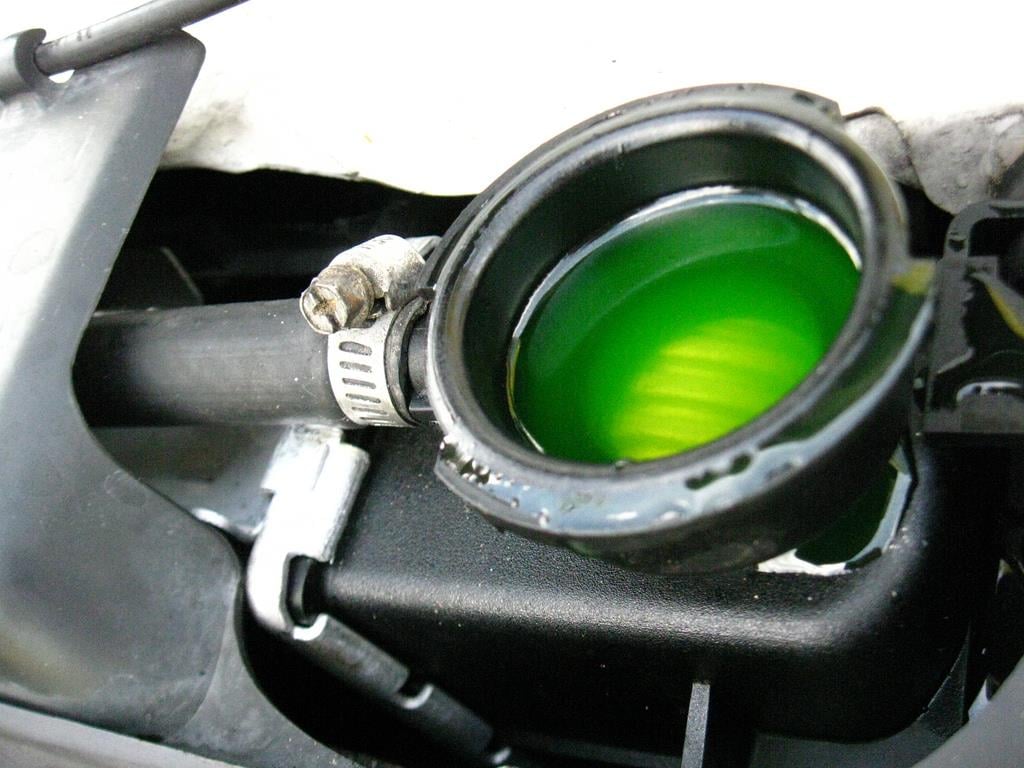
2. What is coolant?
Simply put, coolant is the liquid that runs through an engine to keep it within its correct operating temperature range. The vast majority of modern cars use liquid cooling to maintain optimum engine temperature. If you're buying antifreeze/coolant in a store or online, it's important to know the difference between the two. A product labelled coolant will be a pre-mixed, ready to use solution of Anti-freeze and water that you can pour straight into the cooling system. A product labelled antifreeze will be a concentrated solution, designed to be diluted with water before you add it to your cooling system.
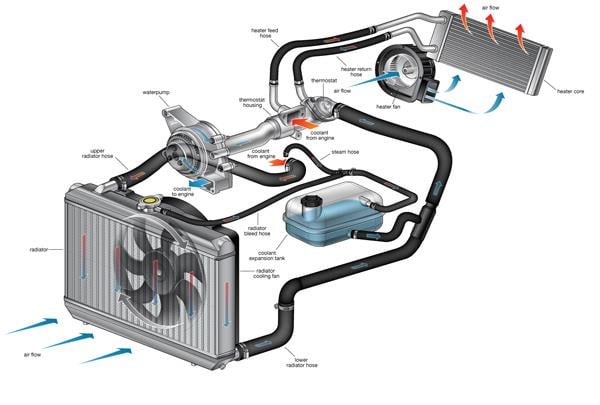
3. How does coolant work?
The cooling system is a closed loop where the coolant is pumped through various small channels in the engine block and cylinder head, removing heat from the metal, before passing through a radiator. Air flowing through the radiator (from the car moving or a supplementary fan) removes heat from the coolant as it passes through, so it is ready to cool the engine again on the next pass. A thermostat controls the flow through the engine and the latest engines vary the cooling depending on conditions to enhance efficiency.
4. Isn't coolant just water?
For the most part yes, though each car maker has its own set of guidelines, which you should strictly adhere to in terms of coolant specification and anti-freeze concentration. It's fine to top up the coolant with water when needs be, though larger top-ups and flush-outs should be done with the recommended amounts of coolant and anti-freeze.
5. Should I worry about sludge in the coolant?
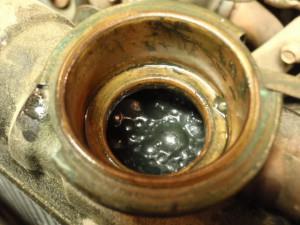 Not immediately, no. If the engine's temperature is being controlled satisfactorily then this probably means nothing more than scale build up or the use of hard water. To ensure the coolant system is working to maximum efficiency it is advised to flush it out in this situation with a suitable cleaning agent, then refill with the recommended coolant and anti-freeze levels. If in a hard water area it's worth using distilled or deionised water.
Not immediately, no. If the engine's temperature is being controlled satisfactorily then this probably means nothing more than scale build up or the use of hard water. To ensure the coolant system is working to maximum efficiency it is advised to flush it out in this situation with a suitable cleaning agent, then refill with the recommended coolant and anti-freeze levels. If in a hard water area it's worth using distilled or deionised water.
6. Do I need to flush out my coolant system?
Always go by the car manufacturer guidelines, but it used to be a general rule of thumb that the coolant should flushed out and replaced every two years or 32,000 kilometres (20,000 miles). With advancements in chemical compound technology this is being pushed out to as much as five years with long life coolant, but it's always worth erring on the side of caution. There are dedicated products you can buy to aid system flushing, such as Holts Speed Flush
7. How much antifreeze do I add?
Most antifreeze products will have a dilution guide on the packaging but if not you can use the chart to the right as a rough guide.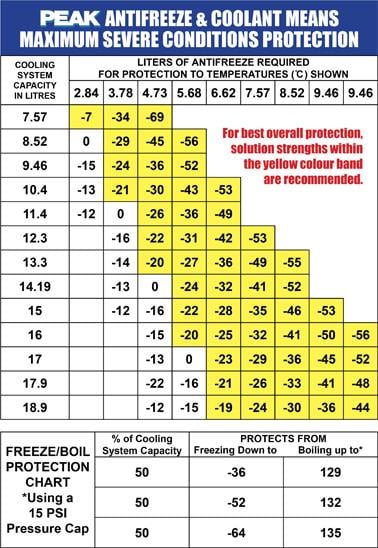
8. Can I measure the concentration of antifreeze in my coolant?
Yes, by using an antifreeze tester. You can buy them right here at MicksGarage.com and they're a cinch to use.
9. What type of antifreeze do I need?
Red antifreeze, blue antifreeze, pink antifreeze, yellow antifreeze, universal antifreeze....which one should you use? The short answer is to check your owners manual and use what the manufacturer recommends, alternatively, you can simply use a universal antifreeze like Prestone All-Makes-All Models antifreeze/coolant.
10. What can I do about an overheating engine?
If your temperature gauge is in the red or the coolant warning light is illuminated then you really do need to stop the car as soon as is safe, pull in and turn off the engine. First and foremost, the coolant level needs to be checked, but be very very careful, as it will be under pressure and incredibly hot. It's not advised to open the radiator cap at this stage, but opening the bonnet (cautiously to avoid any steam) is not a bad idea. Allow the engine to cool before attempting to top up the coolant system and even then you may need the assistance of a mechanic to recover the vehicle and fix it. It's not advised to drive the car if the temperature cannot be controlled, as it could lead to complete engine failure. 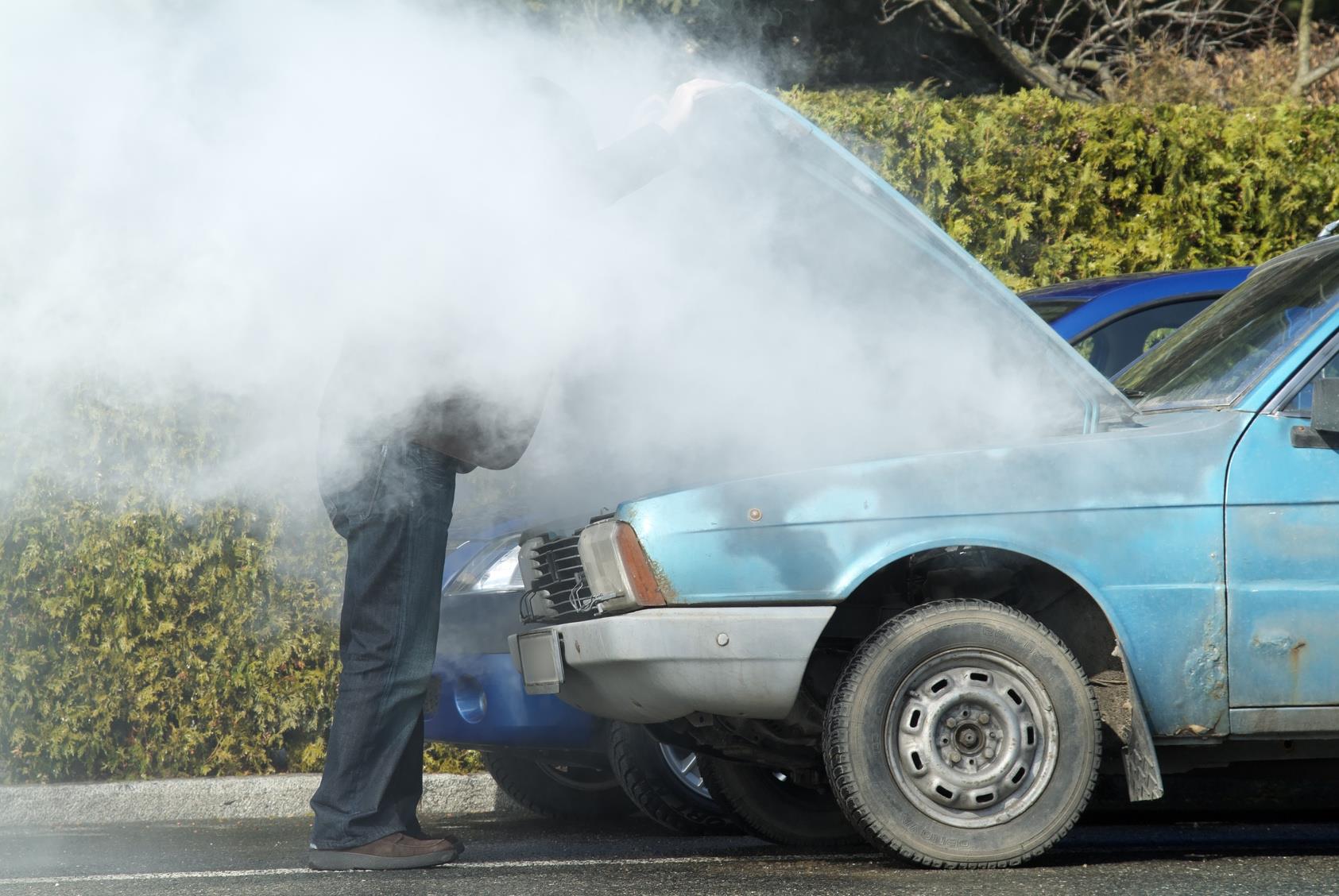 Here's a useful tip if your car starts to overheat: Turn the internal car heater onto maximum and put the fans on full. This helps remove heat from the coolant, as the car's heating and cooling systems use the same coolant/water to function.
Here's a useful tip if your car starts to overheat: Turn the internal car heater onto maximum and put the fans on full. This helps remove heat from the coolant, as the car's heating and cooling systems use the same coolant/water to function.
Safety:
You may not be aware but Ethylene glycol (the main ingredient in most antifreeze/coolant products) is extremely poisonous. Antifreeze poisoning will cause severe damage to your heart, kidneys and brain and it can even kill you! So it goes without saying, you need to be careful when handling it, especially around young children and animals.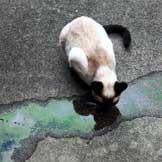 Animals are attracted to the smell of the antifreeze and children, most likely to the colour. A bittering agent is added to antifreeze to try and prevent human/animal consumption but the best course of action is to make sure antifreeze is stored in a safe place. Any spills need to be cleaned up immediately and disposed of responsibly. When cleaning up antifreeze you need to wear gloves because ethylene glycol can cause damage to internal organs through skin absorption. Inhalation of the fumes can also cause dizziness. There is a new type of antifreeze available that contains PROPYLENE GLYCOL. Propylene glycol is much less toxic than ethylene glycol. An animal would have to consume a lot more of this type of antifreeze, a quantity that is unlikely to be available, to get sick or to die. The bottle's label should tell you what is type of antifreeze it is.
Animals are attracted to the smell of the antifreeze and children, most likely to the colour. A bittering agent is added to antifreeze to try and prevent human/animal consumption but the best course of action is to make sure antifreeze is stored in a safe place. Any spills need to be cleaned up immediately and disposed of responsibly. When cleaning up antifreeze you need to wear gloves because ethylene glycol can cause damage to internal organs through skin absorption. Inhalation of the fumes can also cause dizziness. There is a new type of antifreeze available that contains PROPYLENE GLYCOL. Propylene glycol is much less toxic than ethylene glycol. An animal would have to consume a lot more of this type of antifreeze, a quantity that is unlikely to be available, to get sick or to die. The bottle's label should tell you what is type of antifreeze it is.